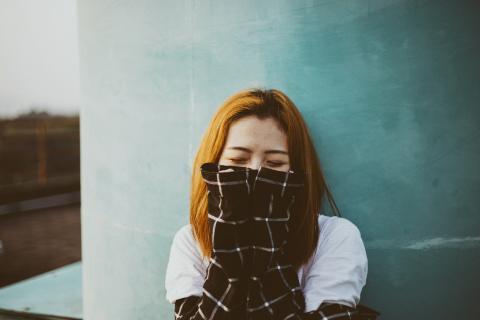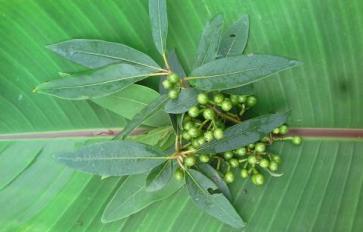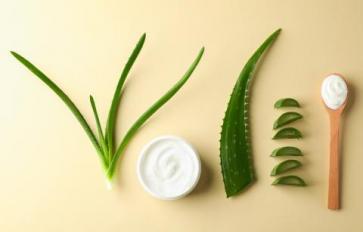
Pimples are the worst: Unless you've got completely flawless skin, you've probably gotten them too. What makes pimples so aggravating is not only their persistent nature, but their versatility. Just like clothing (although not as attractive), pimples come in all different shapes, sizes, and colors. It's hard to know
exactly which pimple type you're dealing with: One form of treatment probably won't work for all pimple types. Knowing the various pimple types will help you
fight them off better, which definitely creates a happy complexion. Here's your ultimate guide to pimples and how to treat them effectively.
Hormonal Acne
If you're a human with a period, you know how annoying hormones can be. But as if menstruation weren't challenging enough, it can also cause hormonal acne. This is pretty common for women in their 20s to 30s and the pimples usually occur on the lower area of the face (like the chin and neck region). They tend to form firm, pink bumps. This type typically occurs when a buildup of estrogen and testosterone accumulates in the system. If the surplus of hormones are eliminated properly, itcould trigger a nasty breakout.
What to do: You can try treating this acne topically or orally (using organic products of course), but also consider changing your diet. Eating a bunch of greens, avoiding inflammatory foods (dairy, soy, gluten, caffeine) and supporting good gut bacteria can really make a difference.
Comedonal Pimples
Comedonal pimples come in the form of pesky whiteheads and blackheads. They're super annoying and can happen when oil and dead skin cells block pores. If the blocked pore stays open, it can look black (hence the name blackhead). If the pore stays closed, the top of the bump looks whiter (whiteheads). Gross, right?
What to do: First, please try not to pop. It's definitely tempting, and hard to resist, but do your best not to. If you pop your pimple, it will only make things worse and spread the bacteria, resulting in more pimples. If you must pop it, make sure you do it right (or have a dermatologist perform a professional extraction). These pimples can also be treated using spot treatments—try these natural spot treatments for more help.
Inflammatory Acne
Inflammation isn't fun: It can cause gut issues and even chronic diseases. But did you know it can also cause unsightly pimples? Yeah, not exactly good news. These are typically either papules or pustules: Papules are hard to the touch comedones that show up in unattractive red or pink bumps. Pustules are irritated,
white-head looking lesions that usually contain pus. I know, neither sound very appealing. Most of the time, these result from a poor diet filled with processed foods, sugar, starch, and glycemic spikes. Stress can also trigger them too.
What to do: You can treat these topically or with oral medications, but it might take a few months to see improvements. As far as a holistic approach goes, try changing up your diet: Here are five acne fighting foods you should try incorporating into your everyday life. Along with that, cut out sugary and processed foods as much as possible: Go for whole foods instead.
Nodulocystic Acne
This type of acne is probably the most painful: It's identified by the deep, painful cysts that can lead to scarring. They usually pop up when things start going from bad to worse on your skin. Essentially, when blocked pores get increasingly irritated, they grow deeper into the skin and actually hurt when you touch them. If you have a nodule, it's typically harder to the touch, while cysts are a bit softer and contain pus. Yuck. Worse yet, this type of acne can affect both your face and body.
What to do: Don't try popping it. Cystic acne rarely gives you poppable pimples. This will only make it redder and inflamed. Instead, try icing it to help the swelling go down. Stick to a healthy skincare routine, eat the right foods, and relax. For cystic acne, probiotic rich foods (cultured veggies), zinc-rich foods
(chickpeas, pumpkin seeds), and vitamin-rich foods (spinach, kale, carrots) are all good choices. Regular exfoliation could help too, but shouldn't be done more than 3 times a week.
Can't identify that pimple?
Having a hard time identifying which type of pimple you have? Here's my suggestion: Go to a dermatologist. I know, dermatology doesn't tend to be holistic, but you may be able to find a holistic dermatologist near you, if you do some digging. That said, it's important to see a skin doctor if you feel your skin isn't getting any better. Acne can be very psychologically scarring and sometimes you just need relief. If you're afraid your dermatologist will prescribe a chemical-filled topical cream, talk to them about it. Tell them you'd prefer something more natural, or at the least with less ingredients. Just be aware that your health matters, both physically and mentally, so you need to do what's best for both your skin and your mental health.








